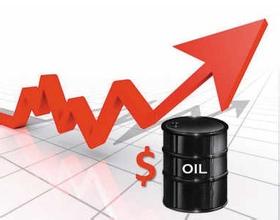(单词翻译:单击)
There are two divergent views of what is happening to the oil price ithin the industry and among serious investors. 2016 may help us to see which is correct.
当前油价正在发生什么变化?在业内人士和严肃的投资者中间,对这个问题有两种不同的看法。2016年油价走势或许有助我们看清哪种观点是正确的。
The first view is that the price is inherently cyclical. What has come down must go back up again and the deeper the trough the higher the next mountain.
第一种看法是,油价本质上具有周期性。下跌之后必然会回升。这道波谷越深,下一个山峰就越高。
The alternative analysis is that the shift we have seen over the past three years is the beginning of a long-term structural shift which will see energy prices materially lower in real terms in the next half century than in the last. Those who take this view believe, to put it very simply, that the likely growth in supply is stronger than the growth in demand.
另一种看法是,油价在过去三年中的变动,是长期结构性变化的开始,预示着下一个50年里,能源价格按实际值计算将显著低于上一个50年。简单地说,持这种看法的人认为,供给的增长潜力超过需求增长。

The overwhelming weight of the coverage of the oil market by analysts and commentators concentrates on the supply side and the volumes being produced and exported from Saudi Arabia or elsewhere. Supply is important but costs matter more.
分析师和评论员们对石油市场的解读着重于供应端,以及沙特或其他地方的产量和出口量。供给很重要,但成本更重要。
Some people remain attached to a theory that can be described as resource scarcity. At its heart this theory suggests that resource development follows a linear pattern in which low-cost resources are developed first, meaning that most if not all future development must be more costly. Unfortunately the history of the industry does not support this view. If anything the experience of the past few decades suggests that the opposite is true.
有些人仍坚持一种可称为“资源稀缺”的理论。该理论的核心是,资源开发遵循线性模式,低成本的资源最先被开发,也就是说,未来大部分乃至全部开发活动的成本一定会更高。遗憾的是,行业发展历史并不支持这一观点。过去几十年的经验表明,情况正相反。
The cyclical theory depends on a dearth of new investment creating a supply crunch in two, three or five years. A lot of projects are being postponed but postponement is no more than a signal to project managers to find a way of cutting costs. Many are doing exactly that.
周期性理论的依据是,新投资不足将导致两三年或五年后出现供应紧张。大量的项目已被延迟,但这对于项目经理而言,不过是要想办法削减成本的一种信号。许多项目经理目前就在这么做。
I can well imagine that in 2016 the oil price will bounce back from its current sub $40 level. The Saudis may try to cut production, there could be more conflict in Iraq, terrorists could attack some of the prize targets such as the oil terminals at Ras Tanura and Abqaiq. Anything is possible, something is likely. But the question is how far the bounce will go.
可以想象,2016年油价将从当前不到40美元的水平上反弹。沙特或许会尝试减产,伊拉克可能会爆发更多冲突,恐怖主义分子可能会攻击一些重要目标,比如沙特拉斯坦努拉和阿巴奇克的石油终端。一切皆有可能,有些事情发生的可能性更大一些。但问题在于,油价反弹的幅度将有多大?
If the bounce is minimal and transitory it will be clear that the structural shift is under way. I hope the companies which are over invested in expensive projects and countries still overwhelmingly dependent on oil and gas revenues are ready.
如果反弹幅度小、时间短,那么显然结构性变化已经开始了。我希望,过多投资于大成本项目的公司以及仍然高度依赖于油气收入的国家对此做好了准备。


